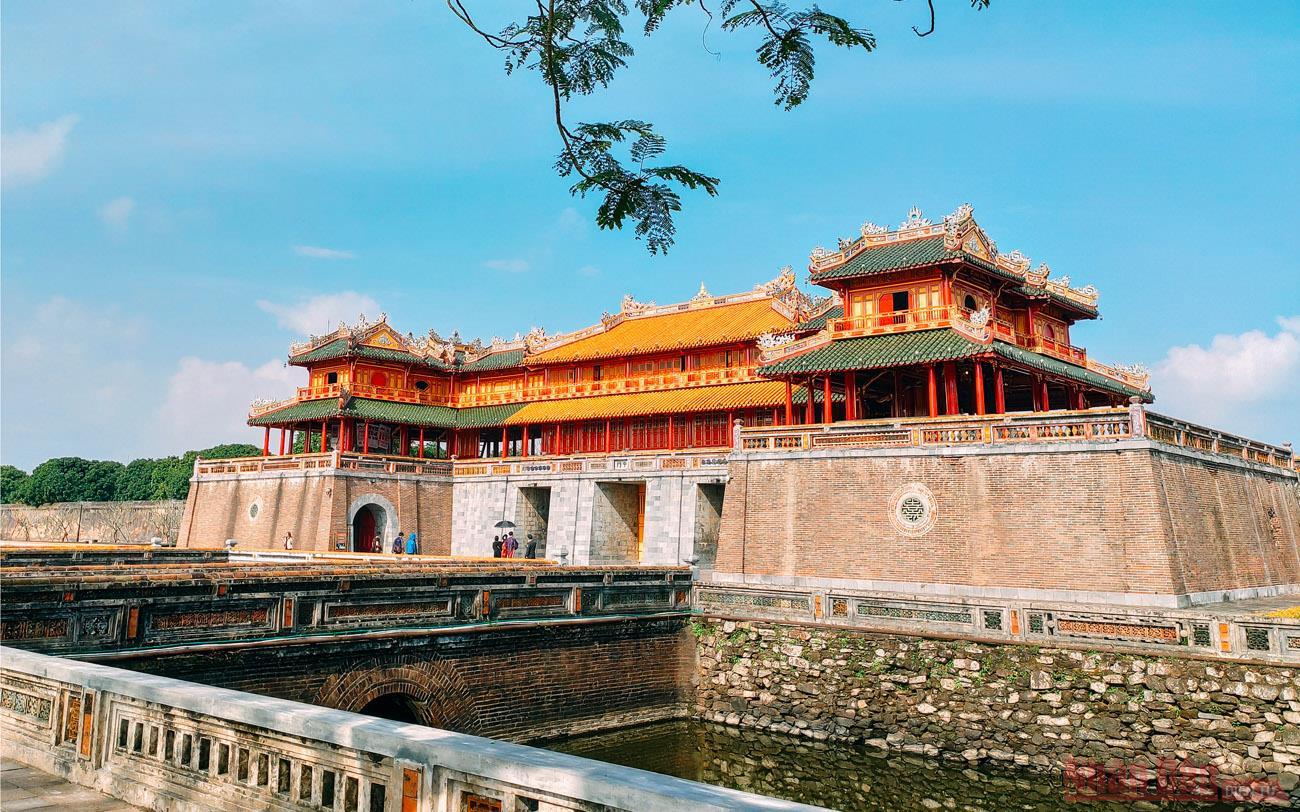Forbidden City Hue is a historic imperial palace complex in Vietnam, showcasing exquisite architecture and cultural significance. It offers a captivating journey into the country’s rich royal heritage.
In the heart of Hue, an enchanting destination awaits those ready to explore Vietnam travel – the illustrious Forbidden City Hue. Steeped in regal grandeur and cultural significance, this timeless palace complex stands as a testament to Vietnam’s rich heritage. This timeless palace complex in Hue offers a window into the nation’s past, beckoning travelers to uncover its rich historical tapestry while immersing themselves in the city’s captivating ambiance.
1. Forbidden City Hue: Location, opening hours, ticket fees
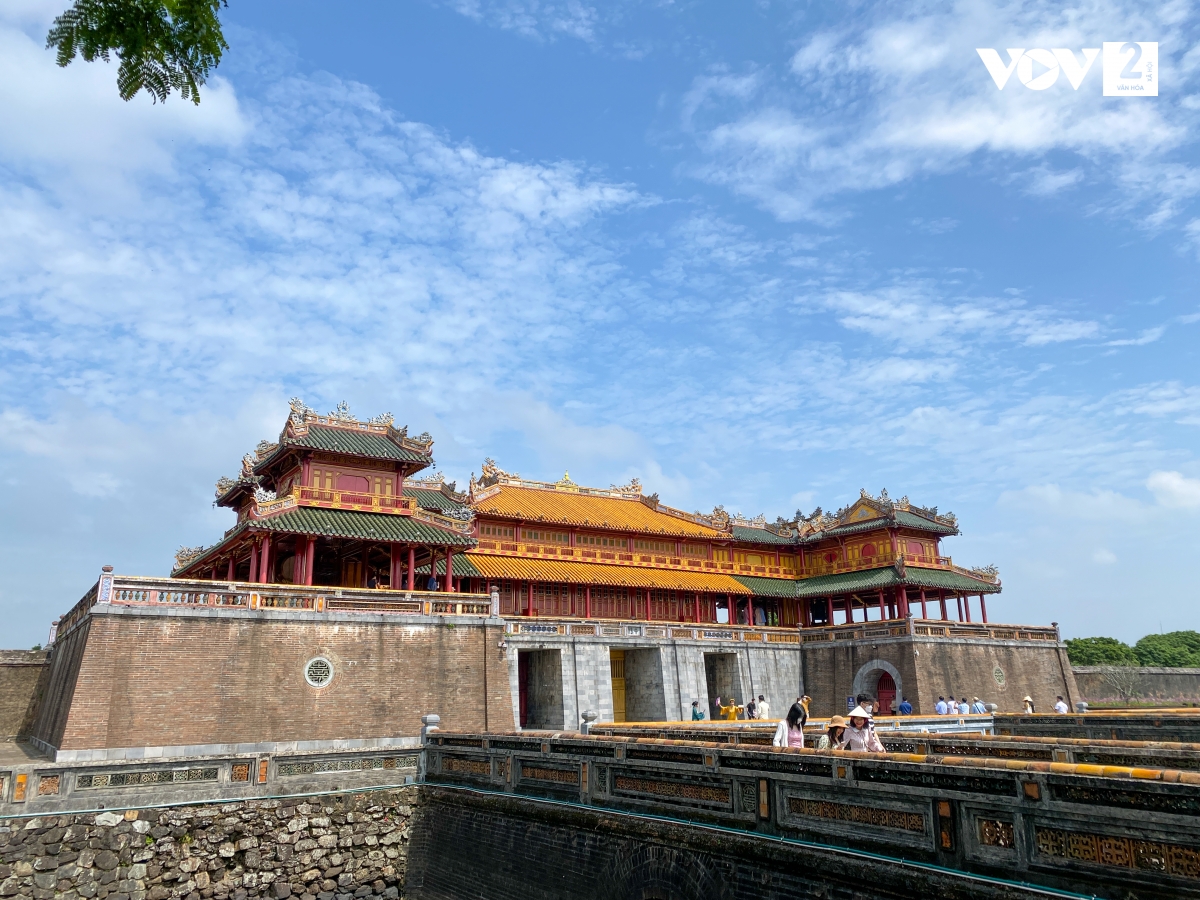
Forbidden City Hue is the last and innermost enclosed space within the Hue Historic Citadel. Embraced by Hue Imperial City, the Forbidden City is located in the heart of Hue, along the northern bank of the Perfume River.
- Address: 23/8 Street, Hue City, Thua Thien Hue Province
- Opening hours:
- In the summer: 6:30 AM – 5:30 PM
- In the winter: 7:00 AM – 5:00 PM
- Ticket fees:
- Adults: 200,000 VND
- Children (aged 7 to 12): 40,000 VND
- Children under 7: Free
2. Things to know about the history of Forbidden City Hue

The Forbidden City Hue, also known as the “Purple Forbidden City,” holds a fascinating history steeped in imperial grandeur. Constructed in the early 19th century during the Nguyen Dynasty, it served as the royal residence and administrative center for the rulers of Vietnam.
Inspired by Beijing’s Forbidden City, the complex boasts stunning traditional Vietnamese architectural elements blended with distinct imperial designs. The city housed the private quarters of the royal family and court officials, symbolizing the pinnacle of power and exclusivity.
However, the Forbidden City Hue’s history also bears witness to turbulent times. It suffered damage during the French colonial period and was further ravaged during the Vietnam War. Despite these challenges, ongoing restoration efforts aim to preserve its cultural significance and offer visitors a glimpse into the history of Vietnam’s feudal times.
3. Highlights of the architectural structure of Forbidden City Hue
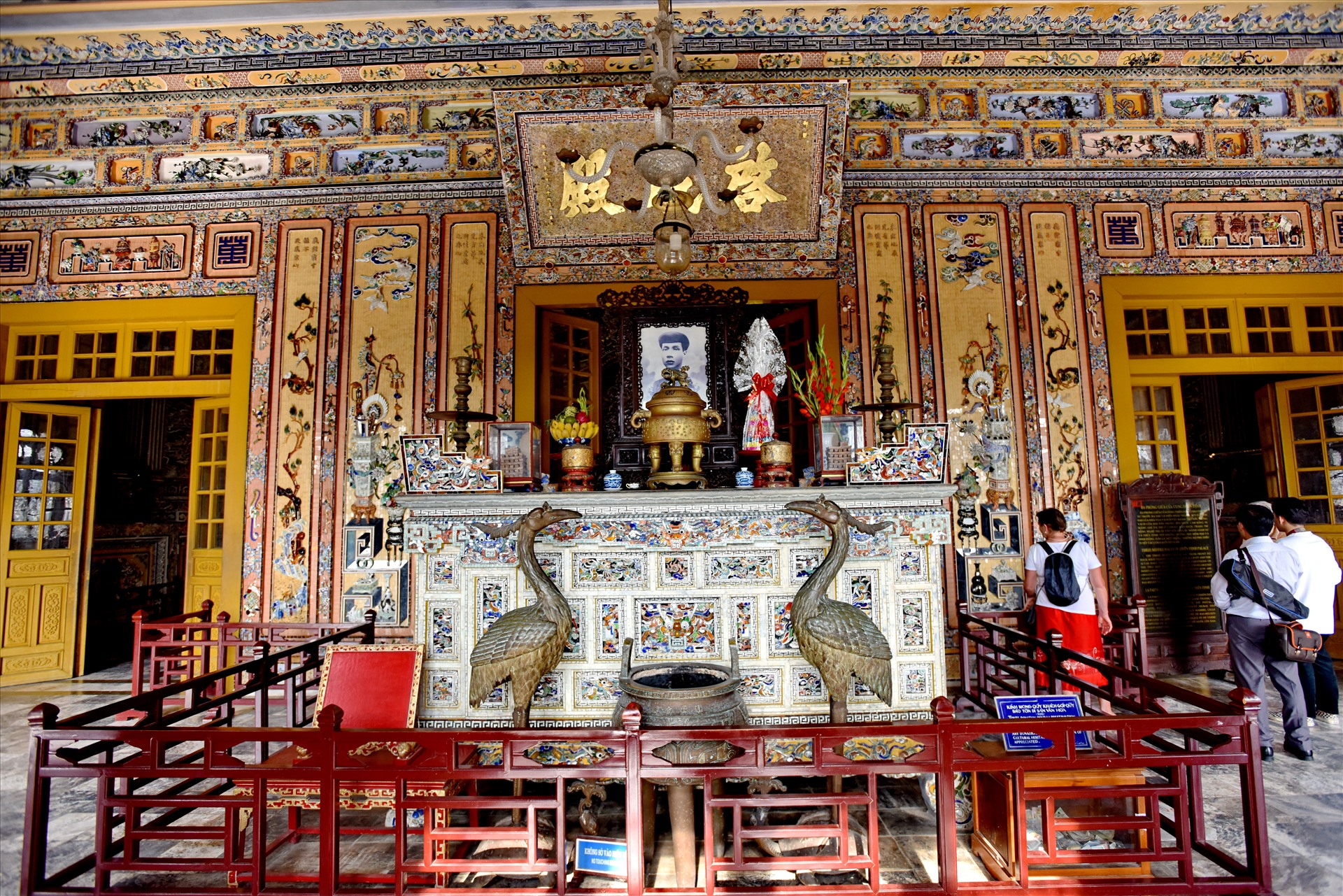
The architecture of the Forbidden City in Hue Vietnam is a captivating blend of traditional Vietnamese design and imperial aesthetics. Inspired by the Forbidden City in Beijing, this complex showcases the distinctive architectural style of the Nguyen Dynasty.
The layout of the Forbidden City Vietnam follows a symmetrical axis, with meticulous attention to detail in its arrangement of gates, halls, and courtyards. The complex is divided into various sections, each serving specific functions within the royal court.
Prominent architectural features include ornate Forbidden City gates adorned with intricate carvings, vibrant ceramic decorations, and stunning rooflines that curve gracefully upwards. The use of vermilion paint, a symbol of royalty, further accentuates the majestic aura of the buildings.
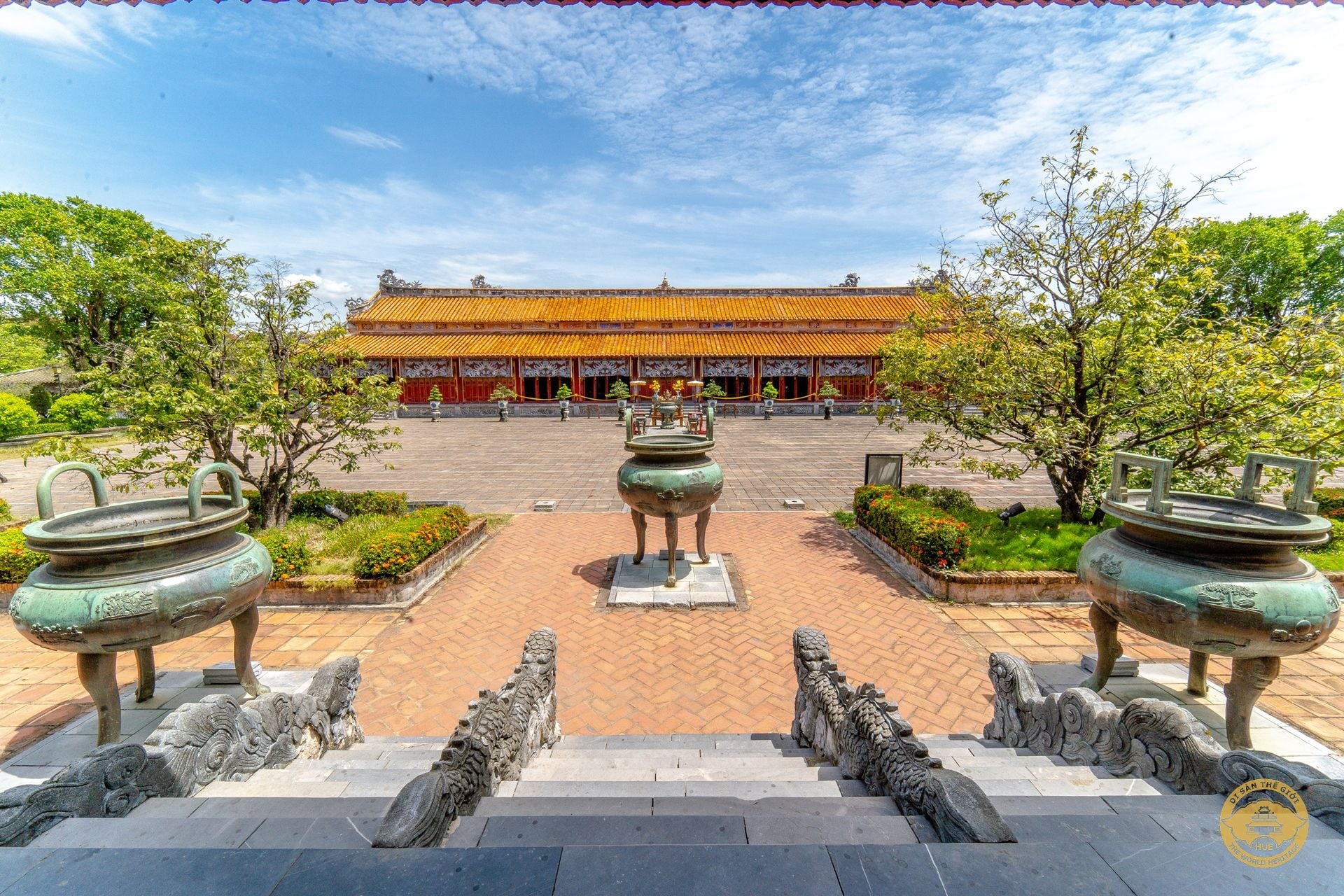
Throughout Forbidden City Hue, visitors can marvel at the vermilion-hued structures, intricate carvings, and vibrant ceramic ornaments, all of which contribute to the complex’s regal ambiance. While time and conflicts have left their mark, ongoing restoration efforts strive to preserve these architectural gems, allowing visitors to walk in the footsteps of emperors and immerse themselves in the architectural splendor of Vietnam’s imperial past.
4. An ultimate guide for your visit to Forbidden City Hue
4.1. What to see in Forbidden Purple City Hue?
Sadly, there is currently not much to see in Hue Imperial City tour to the Forbidden City. Numerous structures within the Hue Forbidden City once served distinct purposes, but these edifices met their demise during wars. Among them, the Can Chanh Palace, a daily workplace for the Emperor; the Can Thanh Palace, the royal residence; and the Khon Thai Palace, home to Hoang Quy Phi, all fell victim to destruction.
Additional constructions in Forbidden City Hue catered to various needs of the king and his family, including reading houses, quarters for minor wives and concubines, and functional spaces like Thuong Thien Duong for dining and Duyet Thi Duong for royal performances. Regrettably, these structures no longer stand, with only two, the restored Duyet Thi Duong Royal Theatre and the Thai Binh Lau Royal Library, surviving as poignant reminders of the past.
- Duyet Thi Duong Royal Theater: A venue for traditional performances and entertainment, adorned with ornate decorations.
- Thai Binh Lau Royal Library: The name “Thai Binh Lau” translates to “Pavilion of Heavenly Peace,” reflecting its role as a center of intellectual and cultural pursuits for the imperial court.
4.2. How to get to Forbidden Purple City Hue?

To travel from Hanoi or Ho Chi Minh City to Forbidden City Hue, you can choose between domestic flights, long-distance buses, or trains.
- Flights: You can take a domestic flight from either Hanoi or Ho Chi Minh City to Phu Bai International Airport in Hue.
- Trains: The train journey offers scenic views and a comfortable travel experience.
- Buses: Buses are a cost-effective option, but the journey can be quite long.
The Forbidden Purple City Hue Vietnam is centrally located within the city, making it accessible and convenient for visitors to reach and explore. From Hue airport or the Hue hotel you are staying in, you can easily take a taxi, hire a cyclo (a type of bicycle taxi), or opt for a rented bicycle to get there.
4.3. What should you wear to Hue Forbidden City?
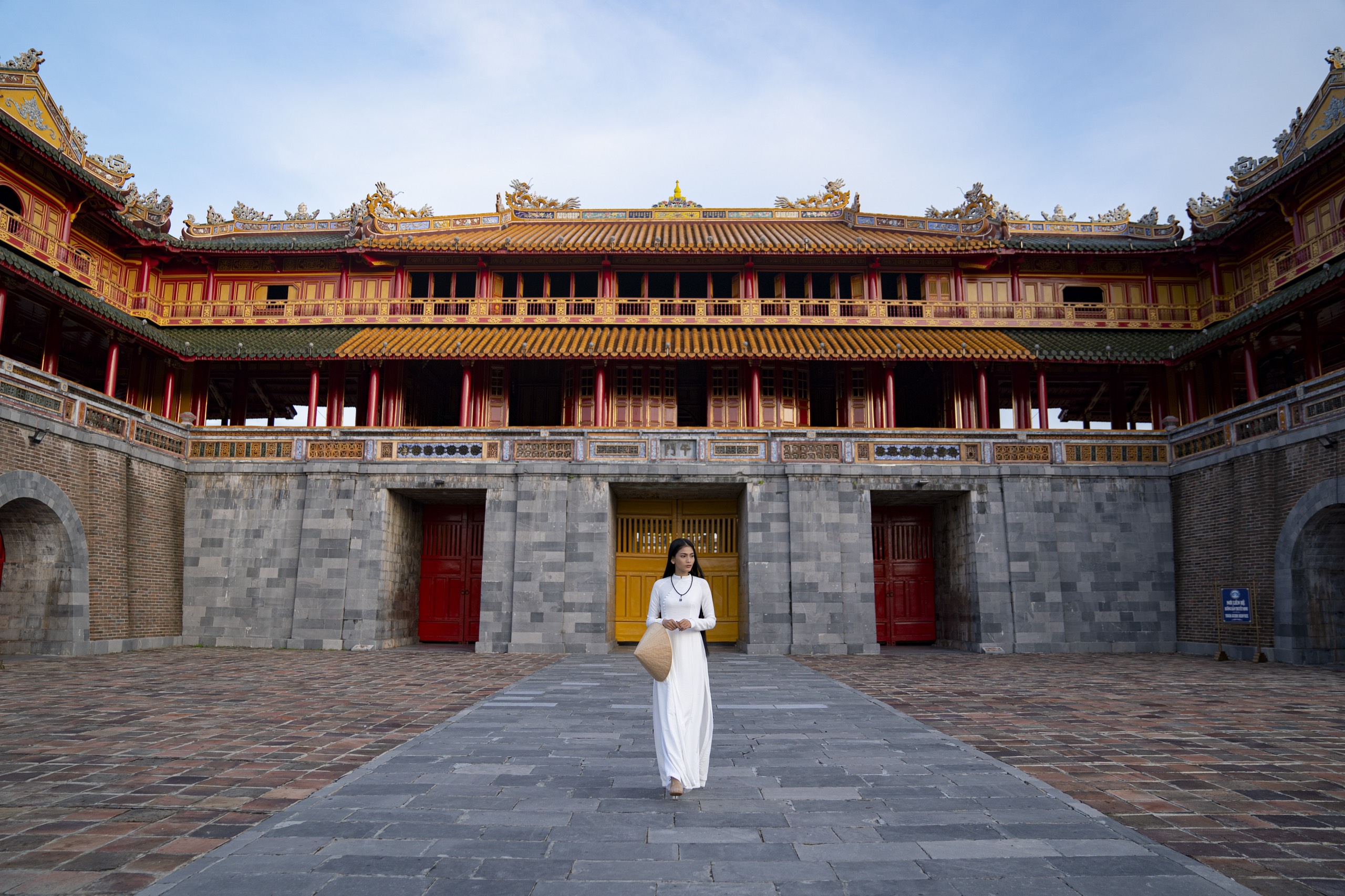
Since Hue experiences both rainy and dry seasons, it is important to check the weather forecast before visiting Forbidden City Hue.
During the hot and humid months from May to September, consider wearing light-colored, loose-fitting clothes to stay cool. Do not forget to wear a wide-brimmed hat, sunglasses, and sunscreen to protect yourself from the sun when visiting tourist attractions in Hue Vietnam.
From October to April, which is the rainy season, pack an umbrella or a raincoat, and choose footwear that is comfortable and can withstand wet conditions. A light jacket or layers might be suitable for cooler temperatures during this period.
Remember that you will be exploring historical and sacred grounds, so avoid wearing revealing or inappropriate attire out of respect for the cultural context. By dressing appropriately for both the weather and the site’s significance, you will ensure a comfortable and respectful visit to Hue Forbidden City.
